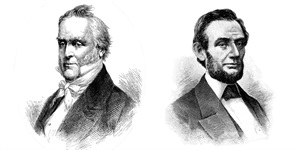Changes, Challenges and Continued Agricultural Success
By Shaley Dehner, Weld County Communications Specialist, Photos courtesy of CSU Extension
The Weld County Extension Office has a long-standing history rooted in agriculture. It has transformed itself from a one-man staff in the early 1900s to a staff capable of overseeing a fair that plays host to more than 45,000 visitors annually.
 In the mid-1800’s the Morrill Act was considered, voted on, and passed through Congress. President James Buchanan vetoed this act. Then, in 1862, President Abraham Lincoln signed the first Morrill Act into law which states: “an act donating public lands to the several states and territories which may provide colleges for the benefit of agriculture and mechanic arts.” The Morrill Act is also known as the Land Grand Act which gave each state 30,000 acres of federal land for every senator and representative. Each state was to sell the land and invest the proceeds in an endowment. The interest was to be used to establish at least one college of agriculture and the mechanic arts.
In the mid-1800’s the Morrill Act was considered, voted on, and passed through Congress. President James Buchanan vetoed this act. Then, in 1862, President Abraham Lincoln signed the first Morrill Act into law which states: “an act donating public lands to the several states and territories which may provide colleges for the benefit of agriculture and mechanic arts.” The Morrill Act is also known as the Land Grand Act which gave each state 30,000 acres of federal land for every senator and representative. Each state was to sell the land and invest the proceeds in an endowment. The interest was to be used to establish at least one college of agriculture and the mechanic arts.
In 1887, The Hatch Act was passed which created Agricultural Experiment Stations to conduct research, investigations, and experiments to support a permanent agricultural industry, and the development and improvement of the rural home and rural life.
The endowments of the 1862 Morrill Act proved inadequate and Morrill was successful in 1890 in securing increased funding through the Second Morrill Act. This act also included a provision that led to the creation of 17 land-grant universities for African-American students.
On May 8, 1914, President Woodrow Wilson signed the Smith-Lever Act into law authorizing Cooperative Extension work between the Land-Grant Colleges, the United States Department of Agriculture (USDA) and local county government. The purpose of the Cooperative Extension Service was to relay information on new technologies and developments from the experiment stations and land-grant colleges to the public. This act, also known as the Agriculture Extension Act, provided for vocational education in the areas of agriculture and home economics for individuals not attending college.
Many land-grant universities began to offer training off campus with field demonstrations for farmers, home management demonstrations for rural women, tomato clubs for girls and corn clubs for boys during 1862. The programs were informal, not received well by the public, and as a result, ended in 1914. The programs needed better financial backing to be successful. The Smith-Lever Act provided these funds from federal, state and county governments.
A secretary, Boys and Girls Club Leader C.O. Plumb, and County Agent Mason E. Knapp in County Agent’s Office in 1920s.On April 1, 1917, the Weld County Extension Office opened. From April to July 1917 the Extension Office was located at the Tribune-Republican. In July 1917, the new court house opened and the Extension Office was moved to a one room office on the fourth floor. There were so many visitors that in the following year the office was moved to the first floor. The responsibilities of the first Extension Agent, Mason E. Knapp, included agriculture, 4-H, the Central Fair, helping with nine community fairs, and other community projects. In 1921 three positions were added to the Extension Office because there was simply too much work for the Extension Agent to handle. To help, the Extension Office hired a full-time County Club Leader (today the title is 4-H Extension Agent), a full time Fair Manager, and a full-time Stenographer.
In 1975, the Extension Office moved to the Centennial Building. Today, the office is an extension of Colorado State University where Weld County pays for half of the Extension program including building and office expenses, program costs and mileage. Colorado State University provides funds from federal programs and the state legislature. The Extension Office provides programs and assistance for citizens in the following areas: 4-H Youth programs, Colorado Master Gardener, Livestock, Agriculture, Horticulture, and food nutrition.